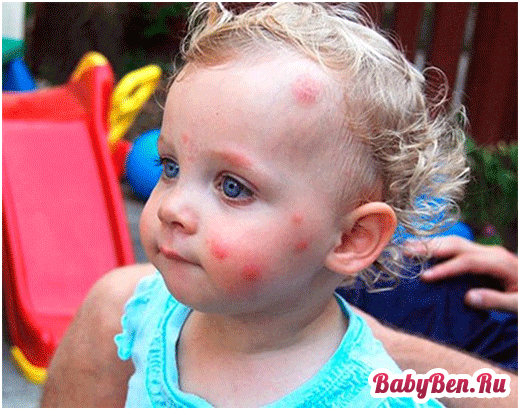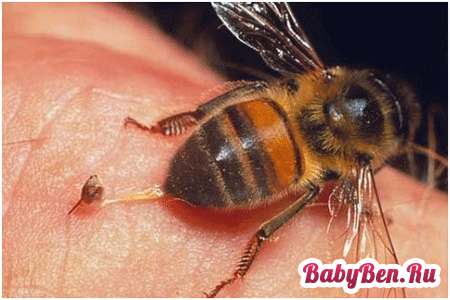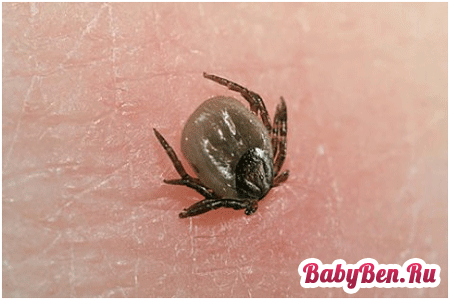
Insect bites are not the only summer problem, although it is no less safe than, for example, overheating in the sun. But for some reason, I bite insects to small children, and therefore the task of each parent is to protect his baby. But how to do that?

The content of the article
Mosquito bites and first aid
If the child sleeps in the same room with his parents, then the mosquitoes will attack him. Why is this happening? The thing is that the metabolism in the child is more intense, the body cells produce more energy, and insects (in this case, mosquitoes) feel this. In addition, in children the skin is thinner and more tender, so it is easier for mosquitoes to “bite it”. Sometimes the frequency of mosquito bites in one night affects parents: in the morning, the baby body can be so bitten that this rash is easy to confuse with an allergic reaction or a manifestation of a childhood infectious disease.
The similarity of insect bites with allergic manifestations lies in the component, which will restrain in the poison of mosquitoes. The child’s body reacts to the saliva of bloodsuckers with itching and inflammation. As a result of this, the baby combs the places of bites, bringing an infection into the resulting wounds, which threatens with suppuration and other serious consequences.
To relieve itching from the bite of mosquitoes, you need:
- dissolve 1 tsp. Soda in 0.5 tbsp. boiled water. A cotton swab moistened in the solution should be treated with bites of bites;
- if there was no soda in the house, moisten the napkins in cold water and apply to the itchy places;
- a fresh sheet of plantain, cosmetic clay or the inside of the pen of green onions can be applied to the mosquito bite;
- if the child combed the place of the bite, after which it is inflamed, dissolve the furatsilin tablet at 0.5 tbsp. warm boiled water, chop and make lotions. If the improvement does not occur per day, you should consult a doctor.

Bee bites and first aid
Boots of bees, OS and hornet are very dangerous for children. Therefore, before sending the child to the site or to the courtyard, check all the places where these insect nests may be. Remove them, and only then allow the baby to play on the street.
Try to remove sweets and fruits away from children. But if the insect still circles near the child, do not worry: the wasps and bees are not the first to attack. They can bite if they feel aggression from a person.
It is worth teaching the child the rules of conduct in the presence of bees and OS. So, do not wave your hands, drive away or run away from them. It is necessary to stop, and do not move until the wasp flies away on its own. But if, nevertheless, the insect bit the child, then, most likely, nothing will happen from the first time. Subsequent insect bites can be dangerous, since the body of children is sensitized to the bee (aspen) poison.
How to help a child?
- Remove the sting without damaging him. This is necessary so that the poison does not have time to leak out of the sting.
- Wipe the place of the bite with hydrogen peroxide, attach ice wrapped in a towel.
- Make a compress of cabbage, cottage cheese, currant leaves or parsley.
- Give the baby an anti -allergic drug.

What should I do if bitten by a tick?
Ticks that are found not only in forests, but also in dachas, are carriers of encephalitis, lime and meningitis. Therefore, going for a walk, where there are a lot of trees, you should put the child so that the ticks do not get to the children's skin: the pants must be tucked into boots, a jacket or jacket should be with long sleeves on elastic bands, and the hood should be tightly tied around the face. It is better to put on light shades - it will be easier to see an insect. Take a rule to inspect the baby after every walk.
If the tick still sucked, it is not necessary to fill it with vegetable oil-this method does not work. Capture the insect with tweezers as close to the skin as possible and pull it sharply, making movement forward and up. Inspect the place of the bite well, if there is a proboscis. After that, treat the wound with alcohol or iodine. Be sure to go to the pediatrician, let him watch the child.
And a very important point: the tick caught must be sent for analysis in the SES. This will help to determine whether the insect was infected or not, and in the case of a positive result, it will help determine the correct treatment regimen.
